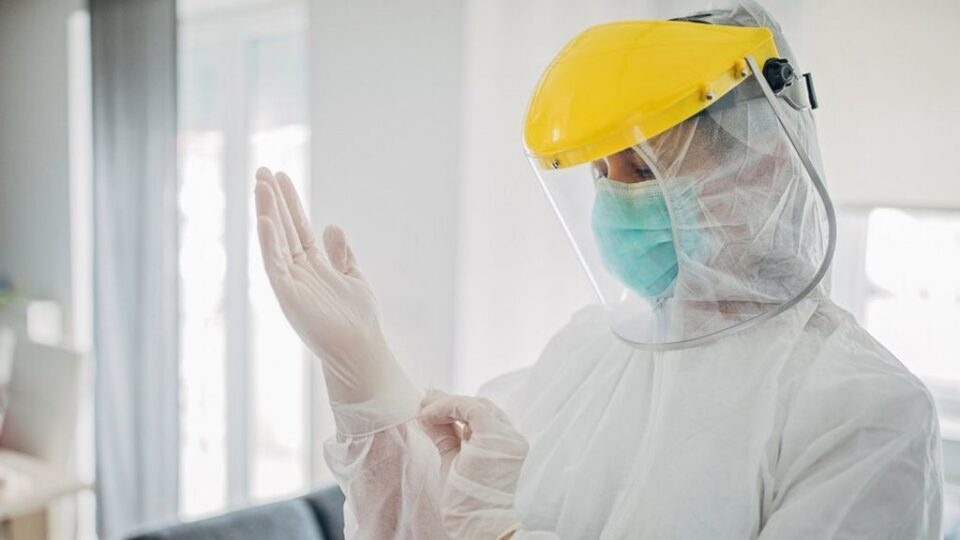More children and young people will have the opportunity to return to school and education from Monday.
Students at the country’s continuing schools and high schools can return to their second home. And more primary school students than before will receive part-time physical education.
These are a few elements of the plan for the country’s further reopening, which is due to take effect from Monday 15 March.
It is the government and its support parties that form the majority behind the plan, which is based on recommendations from the Epidemic Commission. This is an extension of the agreement that the government entered into on 24 February with the Socialist People’s Party, the Radicals and the Unity List on a gradual reopening of Denmark from 1 March.
The next step is an approval in the Folketing’s Epidemic Committee, where the case will be considered on Wednesday.
The rule here is that the government must not have a majority against it, nor will it be the case, because the composition of the Epidemic Committee reflects the balance of power in the Folketing, and thus the majority behind the reopening is secured.
Get an overview of the plan:
- From March 15, continuing schools and colleges (long courses) will open across the country
- Graduating students in primary and lower secondary schools as well as in youth and adult education in East Jutland, South Jutland, Funen and West and South Zealand can return with 50 per cent. attendance.
- Students in 5.-8. class and non-graduate students in youth education in all parts of the country can attend outdoor classes once a week. This also applies to those for graduating students in primary school and graduating students in upper secondary education in parts of the country where 50 per cent have not yet been opened. attendance.
- On non-bridged islands, elementary school students can return to 100 percent. attendance, as is already the case on Bornholm.
- Stores larger than 5,000 m2 can have up to 250 customers. It is no longer a requirement that customers must book time in stores that are under 10,000 m2.
Minister for Children and Education Pernille Rosenkrantz-Theil calls it “incredibly gratifying” that the graduating students in both primary and secondary schools can now return to school.
»It is independently a beautiful feature of the agreement that we also allow all other students – that is, e.g. 1-2. g’ere in high school and 5.-8. class in primary school – get the opportunity to come back one day a week. The whole class and outdoors. That is so much needed, “says the minister.
Across the board, the parties behind the plan emphasize that more children and young people can now receive more than distance education.
“We know how hard they have it and have had it in the last year. That is why it has been a top priority for us in the Unity List to send them back, «says the Unity List’s political spokesperson, Mai Villadsen.
However, the party remains concerned about especially the business school students, who according to Mai Villadsen are still “slightly overlooked” in the reopening discussion.
“It’s incredibly difficult to become a craftsman over Zoom. So the next step for us will definitely be to look at how we can get them back. “
At Radikale Venstre, Lotte Rod, children and education spokesperson, is particularly pleased that 5th to 8th graders now have an opportunity to meet weekly.
“This is as far as it is responsible to go now. And I am glad that we in the Radical Left have come up with the idea of doing outdoor school, because it means that more students get the chance to go to school than otherwise. So it’s better than you might have feared. But I wanted a lot more, ”she says.
Although the infection rates seem to be better than expected, SF does not want to turn up the heat in the reopening either.
“We are incredibly relieved that the number of infections is so much at rest now that it can actually be done,” says Kirsten Normann Andersen, health spokesperson for SF.
She also highlights children and young people is the most important focus area right now. And here the well-being has been difficult, says the rapporteur.
“We can tolerate getting a little more long-haired, but our young people can not continue to feel isolated.”
Kirsten Normann Andersen prefers to listen to the authorities and take one step at a time to be able to monitor the impact of the infection situation.
‘I don’t think it’s important that it’s called full time. I think it is important to create some spaces where students can be seen again. And it’s probably a good idea that we do not have a full house in the schools. “
The chairman of the continuation schools, Torben Vind Rasmussen, has a hard time hiding his enthusiasm that all continuation schools are due to reopen from Monday.
“We can feel how relieved and happy the students are to come back, so we are really looking forward to it,” he says.
From March 1, approx. 8,000 after-school students from 73 schools in North and West Jutland and on Bornholm were allowed to return to their peers if they could present a negative corona test. As far as Torben Vind Rasmussen is informed, not a single confirmed case of infection has been found in the schools since the reopening. On the contrary, the feedback has been unconditionally good, he says.
“The schools have shown that it can be done well. Now we have to get the remaining students back on track, so they can get the last 3.5 months of an invaluable after-school stay, “says Torben Vind Rasmussen.



